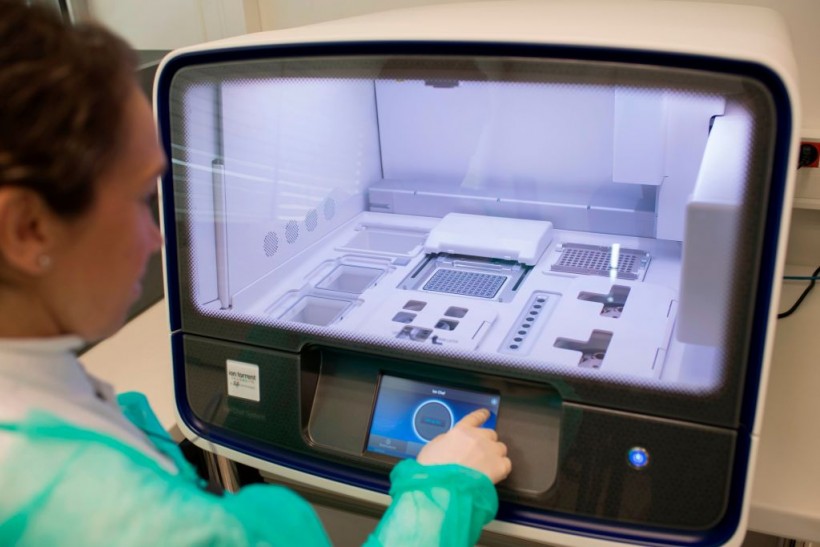Scientists have found that the one extra copy of chromosome 21 that causes genome-wide disruptions in Down syndrome has cells similar to those seen in cellular aging. These cells are called senescent cells and researchers found that they can use anti-senescence drugs to develop future treatment of Down syndrome.
Study lead author Hiruy Meharena said that this cell-type-specific genome-wide disruption is similar to what is observed in senescence, which suggests that too much senescence in the brain due to the third copy of chromosome 21 could be the key to explaining the neurodevelopmental problems observed in Down Syndrome cases.

Laboratory Engineer Marthe Tsochandaridis checks the results of blood samples on the laboratory automat, at the North Hospital (Hospital Nord), in Marseille, southern France, on March 28, 2018, as part of a screening of trisomies, including the trisomy 21 known as the Down syndrome, conducted on pregnant women.
Down Syndrome Explained
The Centers for Disease Control and Prevention (CDC) said that around one in 700 babies is born with Down syndrome. In the US, around 6,000 babies every year are diagnosed with chromosomal conditions.
Chromosomes serve as the packages of genes in the body. Humans have 23 pairs of chromosomes or 46 chromosomes in total. Still, children with Down syndrome have one extra copy of the 21st chromosome, hence the name Trisomy 21, which causes genome-wide disruptions and changes the body and brain development of the baby.
It leads to mental and physical challenges for the baby. Although they almost look alike, children with this chromosomal condition can result in mild to moderately low intelligence quotient (IQ) and make them slower to learn how to speak than most children.
Their most common physical features include a flattened face, almond-shaped eyes, short neck, small ears, tiny white spots in the iris, a tongue that sticks out of their mouth, small hands and feet, a single palmar crease, small pink fingers, poor muscle, tone, and shorter height.
Scientists still do not understand how Trisomy 21 happens despite knowing the cause of Down syndrome. But scientists of the new study that used new RNA sequencing techniques to evaluate cells of twins, one with Down syndrome and one without, have found a curious pattern that repeatedly turned up.
ALSO READ: Is An Anti-Aging Drug Underway? Startup Companies Are Trying to Make People Live Longer
Down Syndrome Linked to Senescence
The study, titled "Down-Syndrome-Induced Senescence Disrupts the Nuclear Architecture of Neural Progenitors," published in Cell Stem Cell, found that neural progenitor cells (NPCs) that develop into cells in the brain have a senescent character.
Senescence or cellular aging is a natural response to stress that makes cells lose their ability to divide, according to STAT News. These cells secrete cytokines, a chemical signal that controls the growth and activity of immune cells. But as people age, it accumulates and causes inflammation. Scientists found that senescent cells undergo internal changes that alter the types of genes the cells express.
Study senior author Li-Huei Tsai said that the study showed the importance of uncovering underlying mechanisms of neurological disorders. SciTech Daily reported that the findings showed that the presence of a third chromosome caused other chromosomes to squish inward that causes changes and differences in DNA conformation within the nucleus that lead to genome disruptions, leading to differences in cell function that affect brain development.
The findings also point to developing novel treatments for Down syndrome using anti-senescence drugs. Tests showed that these medications improved the migration and proliferation of cells and gene accessibility and transcription.
RELATED ARTICLE: New Vaccine May Reduce Zombie Cells That Cause Aging-Related Diseases, Prolong Life
Check out more news and information on Cells in Science Times.














